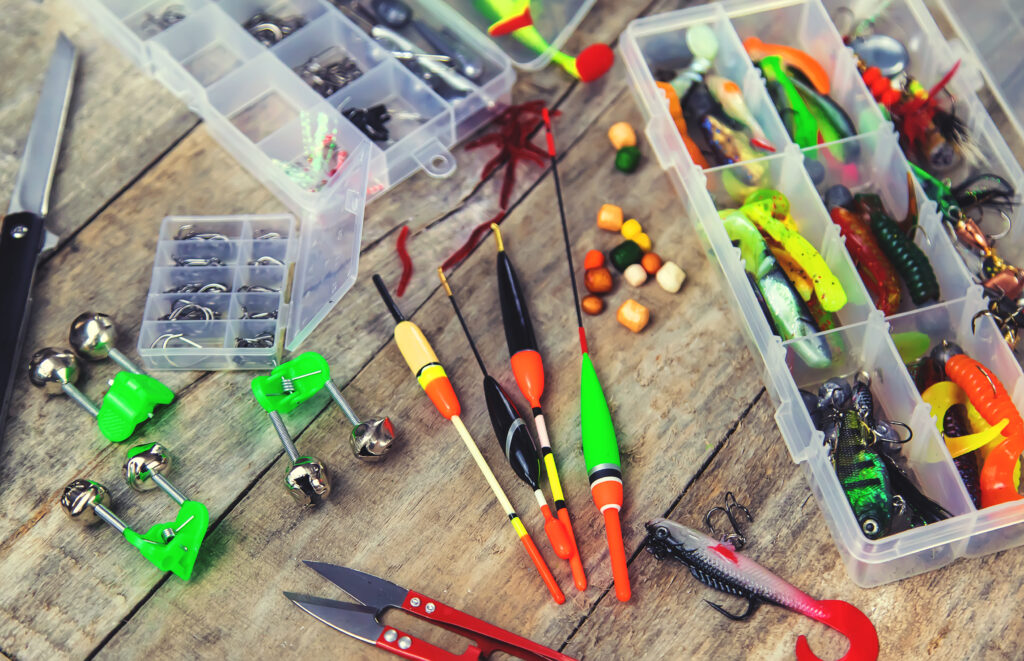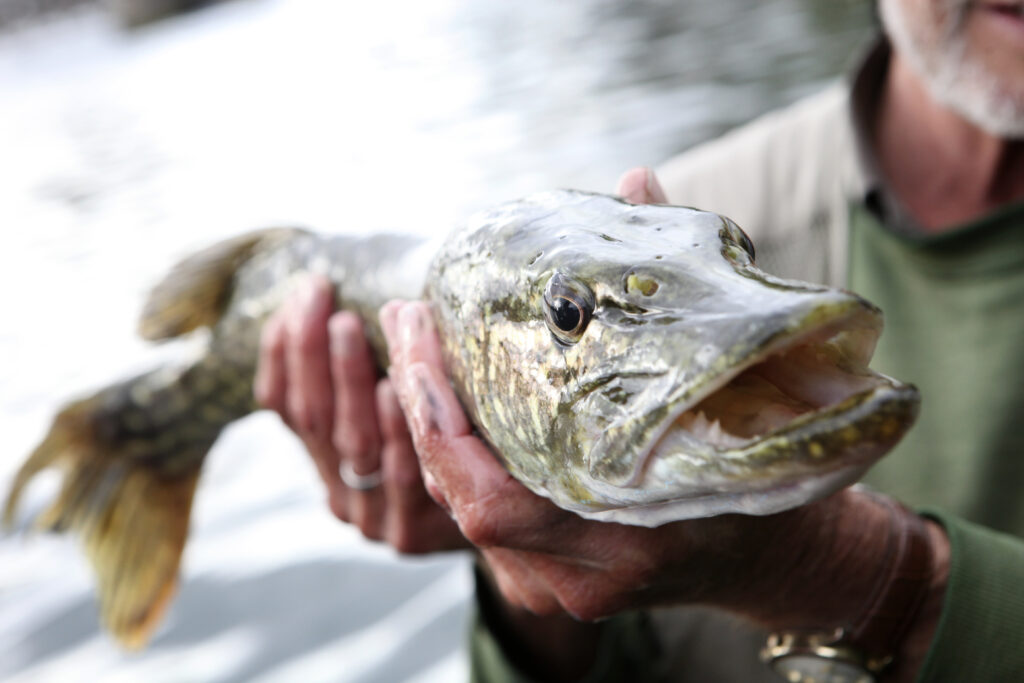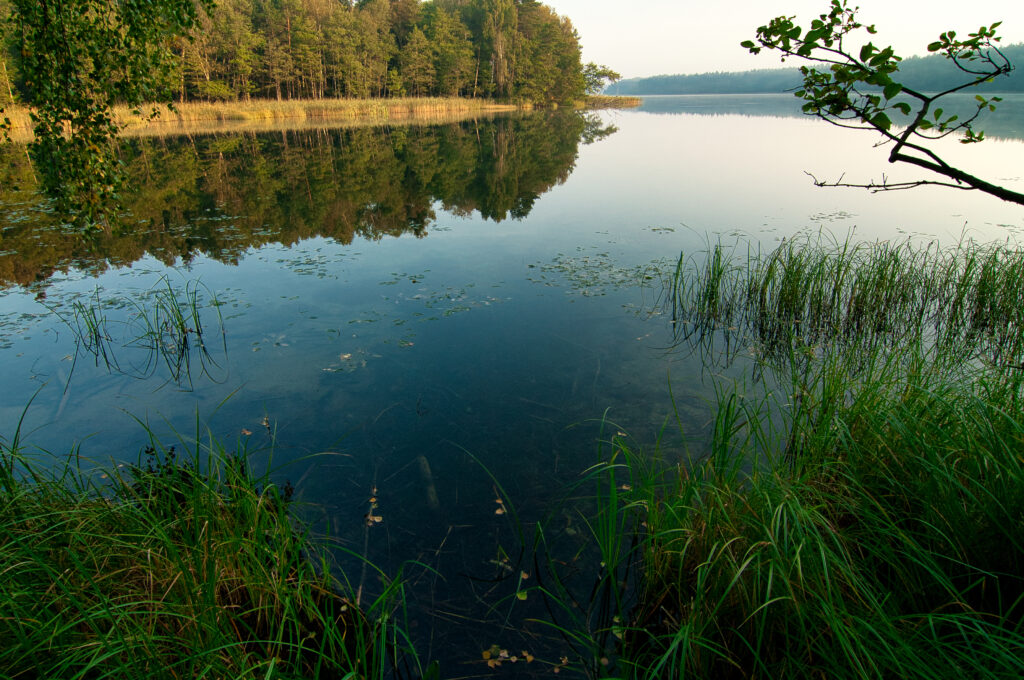The wait is almost over. Spring is near, which means that it is almost time to kick off this year’s fishing season! For those not fortunate enough to go ice fishing during the winter, the spring season brings us the perfect opportunity to get back outdoors and rip some lips.
Imagine feeling the warmth of the sun again after months of cold weather. Fish are cold-blooded animals, so they also look forward to this feeling. As water temperatures increase, fish activity is heightened, encouraging them to engage in feeding frenzies.
Regardless, spring is a season where weather patterns can significantly. Early spring fishing conditions are vastly different from late spring conditions. These are all factors that greatly influence fish behavior and should be taken into consideration before your next spring fishing outing.
Are you new to fishing or looking for tips on how to catch more fish in spring? This guide is full of spring fishing tips to help you land more fish this season.
What Should I Know About Spring Fishing?

Understanding How Fish Behave During the Spring.
During springtime, fish become more active and aggressive in their feeding patterns due to the rising water temperatures after being dormant all winter. This phenomenon has been observed by fish biologists who have found that the spring season has a profound influence on fish behavior. Freshwater fish species such as bass, trout, crappie, and catfish are particularly affected by the increasing water temperatures.
After being lean for several months during the winter, fish are driven by their biological need to fatten up for the upcoming spawning season. The arrival of spring brings along feeding frenzies due to increased food sources, metabolic rates, and longer daylight hours.
How to Prepare Your Gear for Successful Spring Fishing.
Selecting the right gear for spring fishing can seem daunting, but meticulous preparation is essential for an enjoyable and productive experience.
To adapt to changing spring weather conditions, pack versatile clothing options to ensure comfort during your journey. Additionally, keeping an assortment of fishing rods, reels, lines, and lures on hand will help you adapt to changing water conditions.

Reorganize Existing Gear and Tackle.
As the spring fishing season approaches, it’s helpful to take inventory of your tackle box, clean it out, and replace any necessary items for a successful opening day on the water.
Start With Your Tackle Box: Empty the contents and clean out any residue that has built up over time. Is it time to reorganize your tackle to improve efficiency on the water?
Clean and Reline Your Reels: Clean and lubricate your fishing reels according to manufacturer recommendations. Fishing line loses its strength over time. When was the last time you relined your fishing reel?
Inspect Fishing Rods: Dust off any cobwebs that may have accumulated on your fishing rod during the winter season. Check the rod for cracks or fatigued appearance. Lastly, inspect each rod eyelet to ensure it is aligned and ready for your next cast.
How to Choose the Perfect Fishing Location.
Knowing when and where to cast your line can significantly enhance your chances of successfully catching fish. Scouting out prime fishing spots ahead of time puts you ahead of your peers on opening day. Whether you are bank fishing or boat fishing, be sure to locate fishing spots near you and check the local guidelines and regulations to understand what type of fish you will target when you hit the water.
Understanding the feeding patterns, water temperature, and habitats of the species that you are targeting will help you catch more fish and ensure a rewarding experience.
Social media and mobile apps such as Fishbrain can provide insights, support, and fishing gear that other anglers are using to catch fish at a specific location.
Remember, the best fishing spot isn’t always the most popular one; it’s the one that aligns with your needs and expectations. So, do your research, connect with local anglers, and explore the fishing locations around you.
Gear Essentials for Spring Fishing

Choosing the Right Rods and Reels.
Selecting the proper rod and reel combo depends on the target species and fishing technique you plan to use. During the springtime, fishing conditions can vary greatly depending on the depth of the water and the weather conditions for that particular day.
Choosing the right fishing rod and reel can be a daunting task, but understanding the difference between longer, heavier rods and shorter, lighter ones can help make the decision much easier.
Longer, heavier rods are typically used when fishing for larger fish species, such as bass and catfish. Heavier rods can withstand more strain at the tip caused by larger objects at the other end of the line. These rods are great for fishing in areas with heavy cover, such as brush piles or lily pads.
On the other hand, shorter, lighter fishing rods are best used when fishing for lighter, more agile fish species. Fishing for crappie and sunfish around a dock or trout in a shallow stream are great examples of when to use lighter rods.
Choosing the Correct Line and Leaders.
There are three main types of fishing lines to choose from. Monofilament, fluorocarbon, and braided fishing lines are all unique and have their own advantages depending on your fishing style and the type of fish you intend to catch.
Monofilament fishing line is the most common type used in angling. It is stretchy, which makes it more forgiving when casting and fighting fish. Since it is the most cost-effective, it is perfectly fine to start with this type of line for general fishing purposes, regardless of which fish species you are targeting. For larger fish, I recommend going with a higher-pound test (15 – 20 lbs.), and for smaller fish, a lower-pound test (5 – 10 lbs.) would suffice.
Fluorocarbon and braided fishing lines are more abrasion-resistant, making them great choices for fishing in areas with heavy cover and many hang-ups. These line types are less visible in the water column, allowing for better stealth in streams, creeks, and clear lakes.
Choosing the Best Baits and Lures.
Selecting the proper baits or lures for a fishing trip can be an overwhelming experience. However, bait and lure selection can become less complicated during the spring season.
Spring is also the spawning season for most freshwater fish species. Baits and lures that mimic threats to fish spawning beds are most likely to get bit, yielding a more successful fishing experience during the spring months.
Spawning areas are normally located in shallow areas near the banks of a body of water. Shallow water baits with bright colors or shiny spoons are your best option for catching more fish during the fish spawn. Spawning fish are typically more aggressive and will eat almost anything that comes onto their nest.
Post-spawn fish are typically on the hunt and looking for a meal to recuperate from the stressful spawn. This means that they are looking for a quick and easy meal. Bigger fish, such as bass, take advantage of the nearby shad and bluegill spawning beds. Swimbaits that mimic shad and bluegill in shallow water are key to catching larger fish species during this time.
Live bait, such as minnows, can also be a great option to catch more fish during the early weeks of spring.
What Are The Best Fish Species to Target During Spring?
Largemouth Bass.
Early spring kicks off the year for bass fishing. Males move into shallow waters to establish nests, while females circle nearby in deeper water pockets. Dark, shallow water pockets not connected to moving water, such as streams, are typically the best places to locate largemouth bass in spring.
The key to largemouth bass fishing in the spring is patience, precision, and repetition. The goal is to carefully place your lure within a bass’s strike zone to provoke it to bite. After a few attempts, the bass will become agitated enough to bite your bait, potentially leading to a once-in-a-lifetime catch.

Trout.
Trout are notoriously selective and can be very particular about their feeding patterns. The spring season triggers trout to migrate and ascend to shallow, fast-moving streams and rivers. Using the water current as their cover, trout hunt for eggs and aquatic vertebrates.
To successfully catch trout in the spring, it is important to maintain stealth and accuracy. Artificial lures that imitate eggs and grubs can be particularly effective. However, I would recommend carrying a variety of bait colors and types, as trout tend to be picky eaters.
Crappie.
Crappie are schooling fish that tend to travel together in large groups. During the spring, they can gather near submerged timber or brush piles in shallow water pockets where they’ll spawn.
When fishing for crappie, a good starting point is to look for docks or bridges that are surrounded by underwater structures. Using an ultralight spinning rod with a small jig or live minnow will yield dozens of these fish in a single sitting.

Walleye.
The best time to catch Walleyes during the spring season is post-spawn when they are more hungry and need to recuperate from spawning stress. Water temperature directly impacts the feeding activity of Walleyes in the spring.
Early in the spring season, Walleyes are often found in deeper water (15 feet or more) near the bottom of the lake. They are preparing to spawn, slow to respond, and unwilling to chase a bait that is moving too fast. Using a round jig head or ned rig can be very effective at triggering bites during the pre-spawn when these fish aren’t feeding actively.
Large rock piles and reefs are prime Walleye habitat. These structures, found at the bottom of lakes and reservoirs, provide cover and attract bait fish, making them ideal locations for packs of Walleyes to wait and ambush their prey.
Warmer water temperatures in late spring increase the activity levels of Walleyes, causing them to feed more aggressively. Post-spawn Walleyes are more responsive to aggressive fishing techniques. Using larger baits, such as deep-diving crankbaits along drop-offs, underwater humps, and other structures, is the key to catching these active predators.
Panfish.
Bluegill, sunfish, and other panfish are commonly found in many bodies of water and are relatively easy to catch. They are a great option for new anglers or for those who want to introduce children to the sport of fishing. During their annual spawning season, they can often be found near the shallows, where they create nests in the sand. Small jigs and live worms are the best baits for catching loads of panfish.
Catfish.
Warm spring days bring Catfish to shallow waters as they come to spawn. These fish are known scavengers, and their keen sense of smell makes stink baits highly effective. If you’re looking to catch some Catfish, try to find rocky or sandy banks where they may be digging nests in preparation for spawning.
Pike and Muskies.
If you are an angler who enjoys a challenge, pursuing Pike and Muskies during the spring season is the best time to catch these aggressive fish. Compared to other freshwater fish, Pike and Muskies spawn earlier in the spring in cooler and deeper waters. They can often be found in 15 to 20 feet of water located off the coast of small islands and shoals throughout the lake.
Pike and Muskies are their hungriest during the spring, so using large jerk baits and spinnerbaits that cover large areas of water can be very successful in triggering their territorial and aggressive feeding instincts.

What Are Some Proven Techniques for Spring Fishing?

Location Scouting.
Before selecting a fishing spot, it is important to determine the type of fish you want to catch. If you are fishing before or after the spawning season, try fishing in areas with plenty of underwater structures, such as weed beds or fallen trees and cover to protect bait fish. During these times, predator fish tend to be more active and are on the lookout for food to either put on weight for spawning or recover from the stress of the spawning season.
It is important to choose a fishing spot where fish are likely to congregate. Popular areas to fish during the spring include warm, shallow pools, backwaters, or transition areas, where bait fish tend to populate due to increased nutrients in the water. Areas that absorb sunlight and increase water temperature are also great locations for casting your line.
Another key sign to look for when choosing a spring fishing spot is insects. Do you see them flying around or congregating in certain areas? Be on the lookout for swarms of mayflies and other flying insects. They will lead you directly to the best fishing spots.
Knowing When to Fish.
If you want to increase your chances of catching more fish during the spring, you need to pick a time when the fish are most likely in a biting mood.
Timing can vary greatly depending on the species you’re targeting and the body of water you’re fishing in. However, fish activity is generally more common during certain periods of the day, which are influenced by natural occurrences such as sunrise, sunset, and moon phases.
Certain predatory fish, such as bass, walleye, and pike, are at their peak activity during the late afternoon. Take advantage of these fish chasing bait fish in shallow waters to make the most of your next fishing trip.
Bait and Lure Presentation.
When casting for fish in the spring, remember that they can be unpredictable. This means that you may have to try out different techniques to see what works best. Experiment with the depth and speed of your retrieves, and don’t hesitate to pause or jerk your lure to imitate the actions of injured or vulnerable prey.
Patience Pays Off.
Success in fishing largely depends on luck and persistence, even with the best preparation and techniques. A seasoned angler is characterized by their patience and willingness to experiment and learn from each cast. It’s important to remember that every day spent on the water is an opportunity to improve your skills and become better at the craft.
What Safety Precautions Should I Take While Spring Fishing?

Weather Awareness.
Unpredictable spring weather can be risky, even for experienced outdoors enthusiasts. It’s important to check the forecast before heading out and prepare accordingly for sudden changes. Having adequate rain gear, sunscreen, and an extra set of dry clothes can make all the difference in ensuring a safe and enjoyable outdoor experience.
Water Safety.
When navigating around water, exercise extra caution due to fast currents, sudden drop-offs, and potential debris brought in by runoff. If you are out on the water, please wear a life jacket or bring one with you.
Most importantly, always inform someone of your fishing plans and stay aware of your surroundings to ensure a safe and enjoyable fishing experience.
Sun Protection.
The effects of the sun’s rays are stronger in springtime and can be intensified when near water. To prevent sunburn, apply sunscreen generously and wear protective clothing. Sunburn not only causes discomfort but also reduces your energy and focus.
Enjoy your time outdoors catching fish, but reduce sun exposure when necessary to prevent long-term damage to your skin or eyes.
Wildlife Encounters.
Spring is a season when wildlife activity increases, and anglers must be ready for encounters with various animals, such as reptiles, amphibians, and insects. I highly recommend researching the local wildlife in advance to prepare for potential encounters and know how to react responsibly.
Are You Ready to Follow These Spring Fishing Tips?

Springtime fishing offers a unique combination of challenges and rewards, making it an ideal season for both experienced fishermen and beginners to cast their lines. The dynamic weather and water conditions of the season increase fish activity, providing the perfect setting for an adventurous outdoor experience. With the right equipment and proper knowledge about the species they are targeting, you can now take full advantage of the potential that spring offers.
Spring is an exciting time to go fishing, so get ready for an adventure-filled season with these spring fishing tips!

